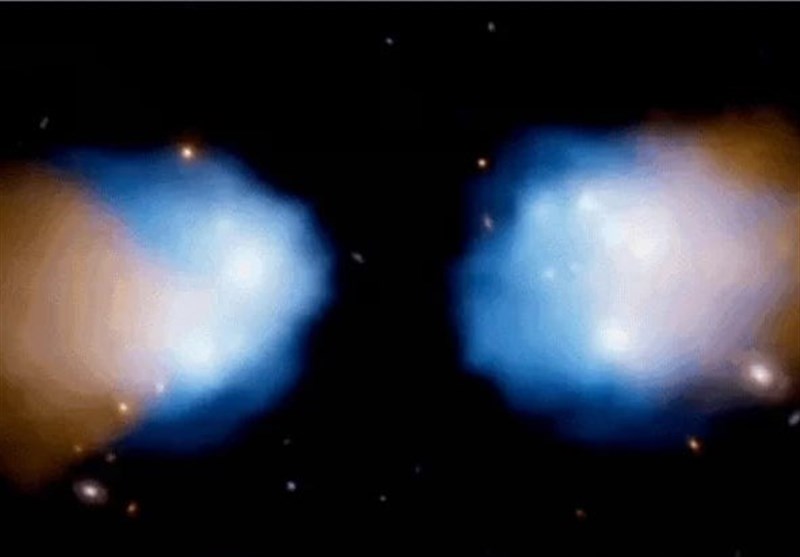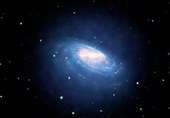Galaxy Clusters' Collision Reveals Dark Matter's Unique Behavior
TEHRAN (Tasnim) – Two massive galaxy clusters colliding have demonstrated an unusual phenomenon in which their dark matter has separated from normal matter and advanced ahead of it, providing new insights into the elusive substance that dominates the Universe.
In a rare cosmic event, two massive clusters of galaxies are observed colliding with such force that their dark matter has effectively detached from the normal matter and surged forward.
This separation is akin to untethered cargo continuing its momentum after vehicles in a collision have come to a halt.
While the decoupling of dark matter from normal matter has been witnessed before in cosmic collisions, this particular observation presents a unique opportunity for scientists to explore the behavior and properties of dark matter.
Dark matter remains one of the great enigmas of the Universe.
It cannot be directly detected, yet its presence is inferred from the additional gravity observed in the cosmos, far exceeding what is expected from the normal matter we can see.
Scientists estimate that normal matter accounts for only 15 percent of the Universe's matter, with the remaining 85 percent being dark matter, which interacts with normal matter primarily through gravity.
Dark matter is pervasive, with normal galaxies like our own embedded within massive dark matter halos.
These halos connect galaxies and clusters through vast strands, forming the cosmic web that facilitates the movement, collision, and growth of normal matter.
Unlike normal matter, which interacts electromagnetically, dark matter is immune to such forces.
During massive events like galaxy cluster collisions, normal matter, including vast clouds of gas in the intergalactic space, collides, becoming hot and turbulent, experiencing braking effects due to shock and turbulence.
However, dark matter remains unaffected by these forces, continuing forward before eventually resettling around the newly merged cluster.
The galaxy clusters in question are collectively known as MACS J0018.5+1626.
Their orientation offers a novel perspective, allowing for new velocity measurements of the matter within them.
Previous observations were side-on, but MACS J0018.5+1626 is oriented so that one cluster appears to be moving towards us while the other recedes.
Researchers employed various techniques to measure the speeds of dark and normal matter.
Dark matter velocity was inferred by measuring the speed of galaxies within the clusters, using the Doppler shift, which detects changes in light wavelength as objects move towards or away from us.
The speed of these galaxies serves as a proxy for dark matter's velocity, as both behave similarly during cluster collisions.
To measure the speed of the intracluster medium, the team used the Sunyaev-Zeldovich effect, a distortion observed in the background light of the Universe caused by electrons in space.
This effect, combined with the movement of the scattering medium, allowed scientists to determine the velocity and direction of normal matter.
The researchers observed a distinct velocity difference between the normal matter and dark matter, as indicated by the galaxies.
"This study is a starting point to more detailed studies into the nature of dark matter," said astrophysicist Silich.
The research represents a significant step forward in understanding dark matter's behavior, potentially bringing us closer to unraveling its true nature.






